|
Gödöllő is a town situated in Pest county 30 km Northeast of Budapest. It lies on the banks of Rákos stream, in the valley of Gödöllő downs. It has direct access to M3 motorway and the brand new M31 relief road. Main road nr. 3 crosses the town and the major train line that connects Budapest to Miskolc (Eastern Hungary) goes through Gödöllő.
Gödöllő is surrounded by downs all around and yet it is an open place as two other open downs join the main downs with their green slopes: Öreghegy (Old Hill), 302 m, and Gudrahegy (Gudra Hill), 251 m. On the South it joins Rákos down, on the East it connects with Besnyő down. Here it is delimited by the Juharos (308 m), Fácános, Börecs, Perőc, Nagy and Kis Fenyves, Nagyremete, Kisremete, Bolnoka (329 m), Haraszt, Gyertyános, Szilhát and Röges hills. In Babat as well as between Gödöllő and Isaszeg fishing lakes were created. There are fed by two streams: Rákos and Aranyos.
Gödöllő lies in a clean, green and panoramic area surrounded by forests. Due to its natural gifts and the favorable geographical position Gödöllő is one of the most attractive settlements among those surrounding Budapest, the capital of Hungary. The forests in Gödöllő's downs have always offered kings and governors excellent grounds for wild game hunting. The town is surrounded by about a hundred square kilometers of forest land, a quarter of which is under Gödöllő's surveillance and administration: pine makes up 10%, acacia 25% and oak accounts for 60% of this area. No air pollutant industrial plants can be found in the town or its surroundings. Gödöllő's air is cleaner than the Hungarian average. Green public ground per capita is more than 40 square meters. The administrative territory under the town's jurisdiction makes up 62 square kilometers, of which 16 square kilometres is the built-up area. The Elizabeth Park (1898) and the Arboretum (Meadows of Archduke Joseph) (1902) are nature reserves where the visitor can find a rich variety of rare tree and shrub species.
The population of Gödöllő in 1900 accounted for 5,893, in 1960 it accounted for 17,693. According to the 2001 census the number of the population rose to 29,445, and in 2010 it hit 33,901. This rise of the population is mainly the result of a tendency for families to leave heavily industrialized areas as well as the recent trend to leave the capital of Budapest in favor of green living. The rate of unemployment is low. The population is mainly Hungarian. In 2010 minority governments were established for the Roma, Polish, German and Rusyn minorities.
The coat of arms of Gödöllő has a pelican as its main motif. An imaginary bird feeding its young with its own blood, it is the symbol of self-sacrifice. It symbolises the ups and downs in Gödöllő's history and conveys the positive historical fact that Gödöllő has continuously undergone a wonderful revival.
About Gödöllő's history
The first written document in Gödöllő’s history dates back to 1349. It relates the story when King Louis I. of Hungary gave Gödöllő and its incumbent forests and land to Péter Pohárnok as a present. The settlement then was called Gudulleu, Gudullur, Gödöle, Gedellő in early documents. The official and permanent name of Gödöllő was adopted in 1868. During the Turkish invasion in the middle of the 15th century the village of Gödöllő became the propriety of various owners and the 1692 census relates of only 26 families. Then, thanks to Vámossy and Hamvay landed proprietors and Krisztina Bossányi, Gödöllő remained a Hungarian owned residence. In the second half of the 17th century István Kürty Vámossy made Gödöllő a village with a mansion He was the first nobelman to live in Gödöllő in his mansion built in the centre of the village in 1662.
A decisive turn in the life of Gödöllő was brought about by Antal Grassalkovich I. (1694-1771) who later became the proprietor of Gödöllő. Antal Grassalkovich was a baroque nobleman with a fenomenal career who chose Gödöllő to be the centre of his estates and thus offered a grand possibility for development in Gödöllő. He had a splendid baroque castle built in Gödöllő between 1744 and 1751 which later earned a great architectural and historical importance. Even Queen Mary Therese paid here a visit in 1751. Antal Grassalkovich was also a generous patron of art with a good taste in many ways. When building the Royal Castle of Gödöllő he worked with famous architects and sculptors of the time such as András and János Meyerhoffer, Martin Vogerl and Jakab Gföller. A great part of today's monuments in Gödöllő date back to Grassalkovich's era. Among these the second most important one is the pilgrimage site and Basilica Minor of Máriabesnyő which has become a major pilgrimage site in Hungary. The workforce invited for the grand construction period was craftsmen from Slovakia and Germany. As a result the Hungarian population, followers of the Reformed church, became of mixed nationality and religion and the number of the population soon doubled. In 1763 Gödöllő became a town with rights to operate a market and has since been the centre of the region due to its markets and geographical position. It acted as a transition territory between the Hungarian lowlands and the highlands of Slovakia, the language used by locals was a dialect between that used in these two territories. After Grassalkovich’s death, his son, Antal Grassalkovich II. and grandson, Antal Grassalkovich III., proved good patrons of art but poor patrons of wealth. The Baroque Theatre built by Antal Grassalkovich II was reopened in 2003 after a 150 years break.
Antal Grassalkovich III gave the capital the plot in Budapest to build the Hungarian National Museum and the Hungarian National Theatre in Pest (former National Theatre).
On the other hand he mistreated his grandfather's well-managed and great property and this lead to the extinction of the Grassalkoviches after his death in 1848. The quick and surprising extinction of the Grassalkoviches was just as unexpected and fabulous in the Hungarian history as their upcoming as a noble family. The castle in Gödöllő was first bought by a banker of Greek origins, Baron György Sina, and then sold to a Belgian bank.
The Revolution and War of Independence of 1848-1849 made Gödöllő an important site of the historical events. At first it was the home of Duke Windischgratz, the Austrian troops' commander in chief, and later, following the victorious Battle of Isaszeg on 6 April 1849 it became the headquarters of Lajos Kossuth and his generals. This is where Kossuth raised the question and made plans for the dethroning of the Habsburg house, and this is where he formulated the Declaration of Independence which was adopted by the Hungarian Parliament in Debrecen on 14 April, the same year.
Following the Reconciliation of 1867 the Hungarian Government bought the castle and its auxiliary lands back and gave them to Francis Joseph I. and Queen Elisabeth as a coronation present. Under the surveillance of Miklós Ybl, a renown architect of the time, the castle was rebuilt to meet the new royal demands. This is when the Baroque Theatre was closed. From this time on the castle became the spring and autumn residence of the royal family. The formation of the new holiday site and royal demesne resulted in a quick development of Gödöllő. It was Franz Joseph's wish that the North Railway be brought to cross Gödöllő. In 1911 the suburban train line was linked with it, too. The infrastructure underwent a serious development: from 1884 Gödöllő's public administration was reorganised to suit a municipality. From 1907 on the main roads were built from stone, and from 1908 electricity was introduced. New agricultural educational institutions and model farms were established: a Technical School for Chicken Breeding (1898), a Bee Farm (1899-1900) and a Potato Cultivation Farm (1913). The successors of these are still working. Work around the royal residence provided for a humble but secure life for the main part of Gödöllő's population. In 1869 the first Hungarian savings bank, the famous Takarékpénztár, was opened and the first shares were subscribed by Francis Joseph himself.
At the beginning of the 20th century Gödöllő became a fashionable holiday resort and tourist attraction. The healthy air, beautiful sights, big parks, good public transportation, the nearness of Budapest and the presence of the royal family made Gödöllő attractive to the bourgeoisie in the capital. A number of actors, writers and journalists rented a villa or had a new one built in Gödöllő. Two hotels, a number of baths, restaurants were at the service of the visitors. The Art Colony (1901-1920), the only artist group to deal with seccession, was formed upon the advice of Aladár Körösfői Kriesch, a major painter of the time. Its members started to operate a weavers' workshop in 1907. A booming tourism made it possible for the small entrepreneurs and small craft industries – especially the services – to develop vigorously. As a natural outcome the structure of the population reorganised: the number of agricultural workers fell. In 1900 49.9% of the population working in agriculture fell to 21.9% in 1930. By 1990 Gödöllő became a county town (járási székhely).
At the end of World War I Gödöllő once again became an important political arena. This is where King Charles IV. got news about the dissolution of the Monarchy in the autumn of 1918. The negotiations with Mihály Károlyi, the first prime minister of the Hungarian Republic, were held in the castle. The Ministry of Agriculture held their deliberations in Gödöllő. On this occasion an important question was raised as to whether the former royal residence and its auxiliary land should be made an agricultural centre by building an agricultural academy here. Zsigmond Móricz, a major Hungarian novelist and Social Realist, took part in these debates and he wrote an article with the title: One diamond from a kings’ crown and one thousand loaves of bread ("Egy koronagyémánt és ezer koldustarisznya").
In 1919 Aurél Stromfeld, Chief of Staff of the Hungarian Red Army (a revolitionary militia of the Soviet Union) of the time, organised his army headquarters in the Grassalkovich castle. Later it was occupied by Charles, Romanian heir, who was then the leader of his invading Romanian army. Between the two world wars the castle was the residence of Miklós Horthy, Regent and Head of State in Hungary (1920-1944). In 1928 with the financial help of the Rockefeller Trust and upon American experience the first health care reform institute of the county was established in Gödöllő. The components of the institute such as the maternity ward, the dentistry and the nurses were governed by the National Public Health and Medical Office organized in 1930. This period saw a number of representative, international happenings in Gödöllő: the Jamboree in 1933 hosted 54 nations and 26,000 scouts and in 1939 the girl scouts' meeting, Pax Ting was also organized here. Count Pál Teleki, former prime minister of Hungary and Chief Scout of the time is buried in the cemetery of Máriabesnyő church. Horthy had famous visitors like Emmanuel Viktor, the Italian king in 1934 and Pope Pius XII in 1937.
Following World War II the development of the town took a turn. Part of the Grassalkovich castle became the barracks of the Soviet Army soldiers, and the other was transformed into a home of the social welfare services of the City Council of Budapest. New plans for urban development were to change the profile of the town. Its holiday resort profile was soon overshadowed by the incoming industries such as Ganz (Hungarian Electricity Company) in 1950 which was followed by other representatives of the industries in consecutive years. The other decisive turn in the life of Gödöllő was the relocation of the Agrarian University to Gödöllő in 1950. With this move the dream plans which had started forming at the beginning of the century came true and complete: Gödöllő became the country's agrarian centre. The university gave good grounds for other scientific and agrarian institutions to be established. As a result of the industrialisation and the creation of jobs the number of the population almost tripled. New housing estates were built. Although physically the two settlements were attached, Máriabesnyő, which used to be an independent settlement, was officially attached to Gödöllő in 1965. On January 1 1966 Gödöllő was declared a town, and the seat of Aszód (a neighbouring town) was attached to Gödöllő micro-region.
Gödöllő is a traffic node as well. It is traversed by the Budapest-Miskolc main railway line. There are two stops in Gödöllő: Állami Telepek and Máriabesnyő. A suburban train makes it possible for the visitor to reach Gödöllő form Budapest in less than 45 minutes. The suburban train starting form Örs vezér tere (end of M3 red metro line in East Budapest) meets the train line in Gödöllő. Main road 3 also crosses the town. M3 and the recently inaugurated M31 motorways pass right next to Gödöllő with a direct linkage to the town. Thanks to these both Ferihegy Airport and the capital are only a 25 minutes drive from Gödöllő. Vác, Pécel and Jászberény, which are important towns in Hungary, are also very easy to reach through directly linked main roads from Gödöllő. A significant number of main bus lines cross Gödöllő. The public transportation system in inner Gödöllő is provided by a number of buses. The small airport with a grassy runway outside the town of Gödöllő also functions as a parachuting centre.
The economy of the town has been transformed substantially in the recent years. The formerly big industrial undertakings have become smaller, more modern. New undertakings have moved to Gödöllő creating more jobs than is available in Gödöllő. At present there are no more available industrial spaces in the town. Gödöllő Business Park is a good opportunity for the prospective investors for long time investments and provides for job opportunities for the population in the region. Industries that advocate environment friendly and knowledge-based techniques, those which apply advanced technologies and require research development activities are welcome.
The population retention capacity of the town has improved substantially. The local government of Gödöllő wants to, as far as it is possible, provide for all the basic and important services. These should be available locally or in the very close neighborhood for the population of Gödöllő.
The most important resources of the town are the human resource. Gödöllő is in possession of the whole palette of education from kindergarten to university and thus there is possibility for a comprehensive and clever development of human resources. The institution system is a well-established and differentiated education system both in its structure and its content and as such it lives up to the expectations of those seeking it.
|
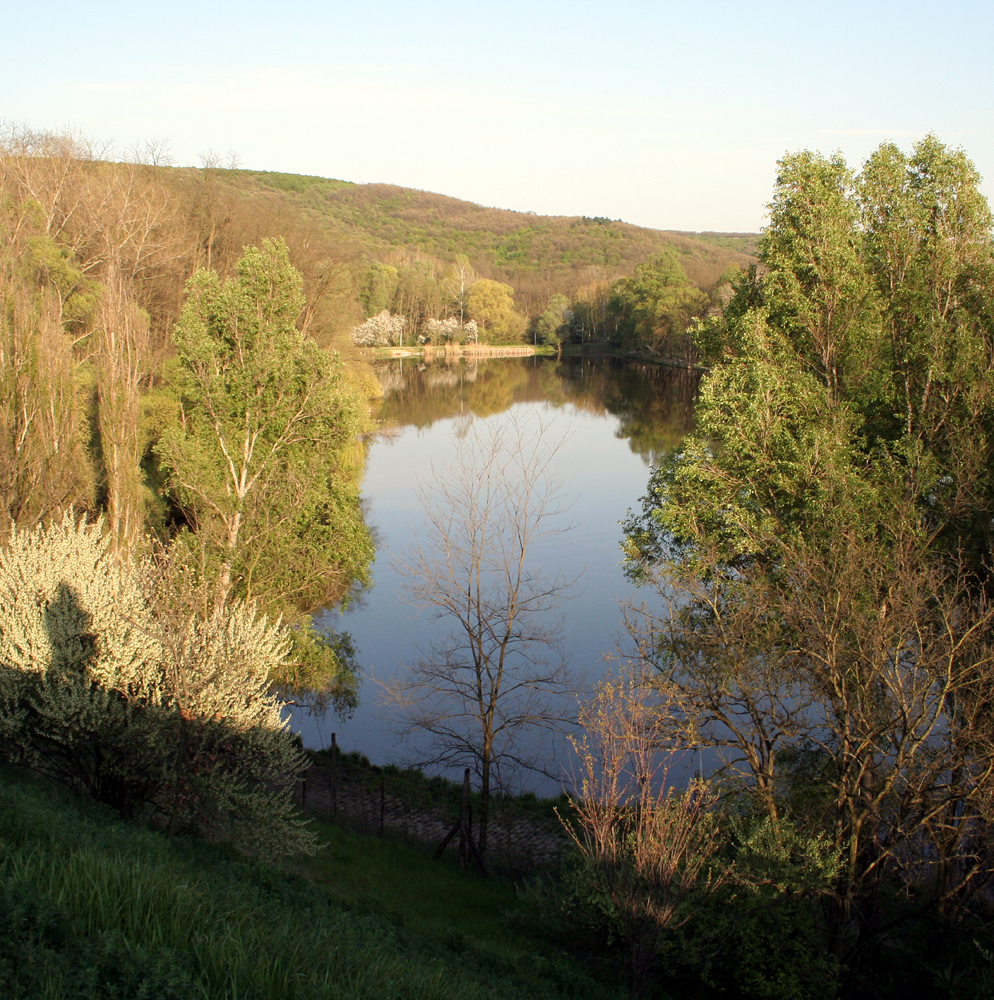
|
| Fishing lake in Babatvölgy |
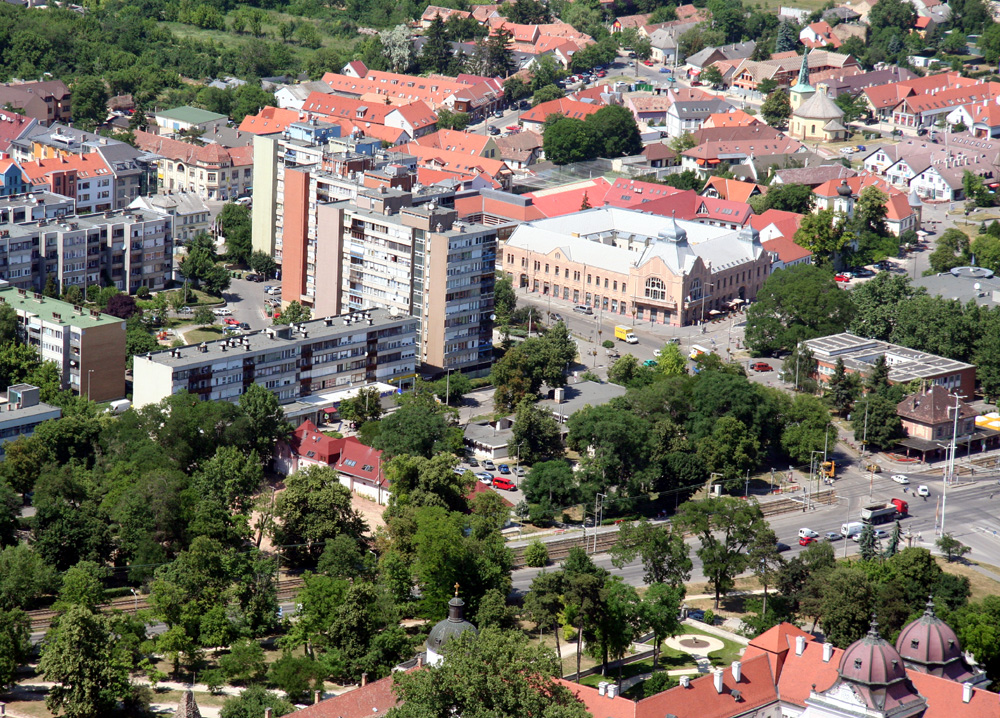 |
| The town from a bird's view |
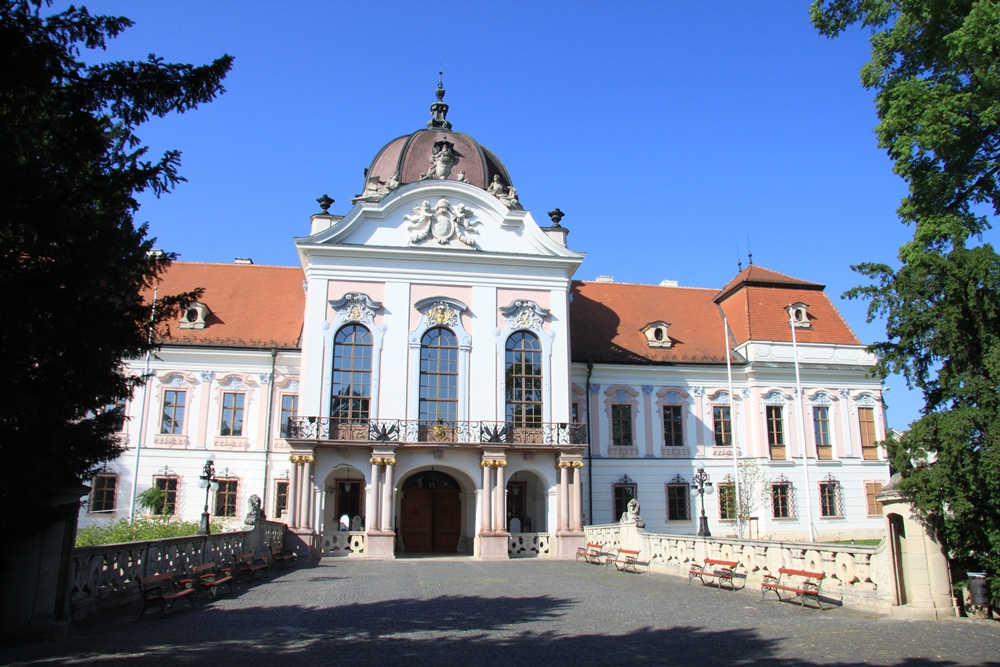 |
| The Main Facade of the Royal Castle Gödöllő |
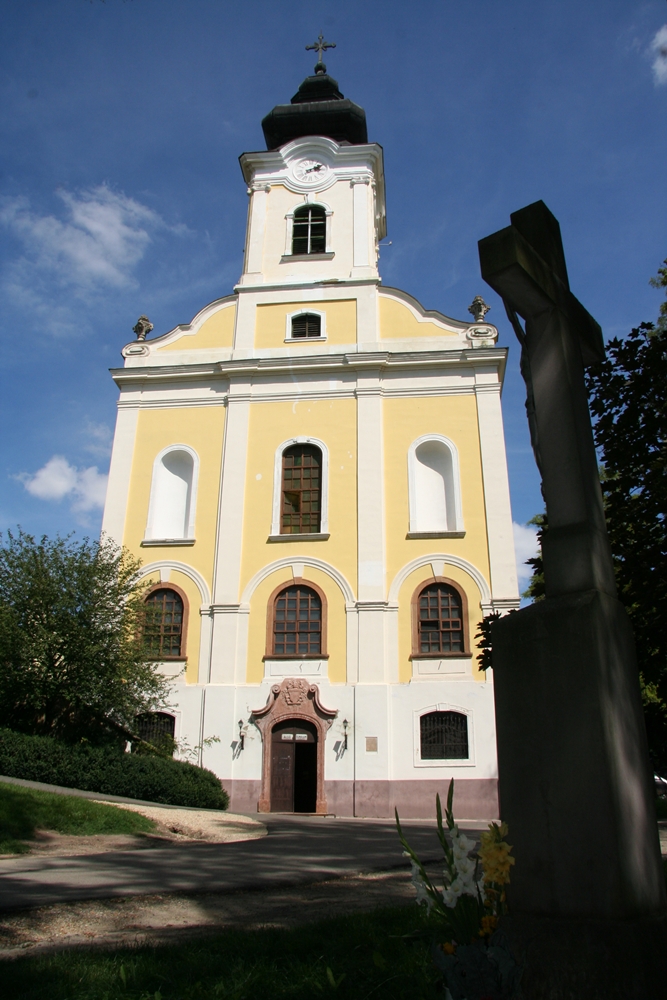 |
| Basilica Minor to the Virgin Mary/Holy Virgin in Máriabesnyő |
 |
| A postcard of the old Gödöllő |
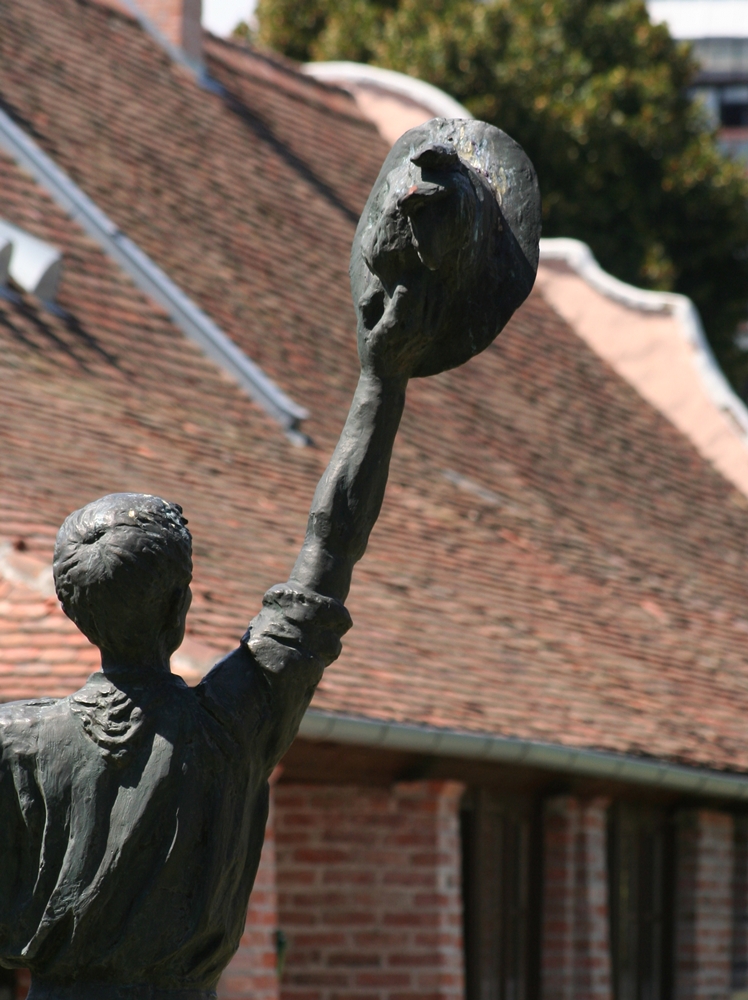 |
| The Scout |
 |
| Szent István University |
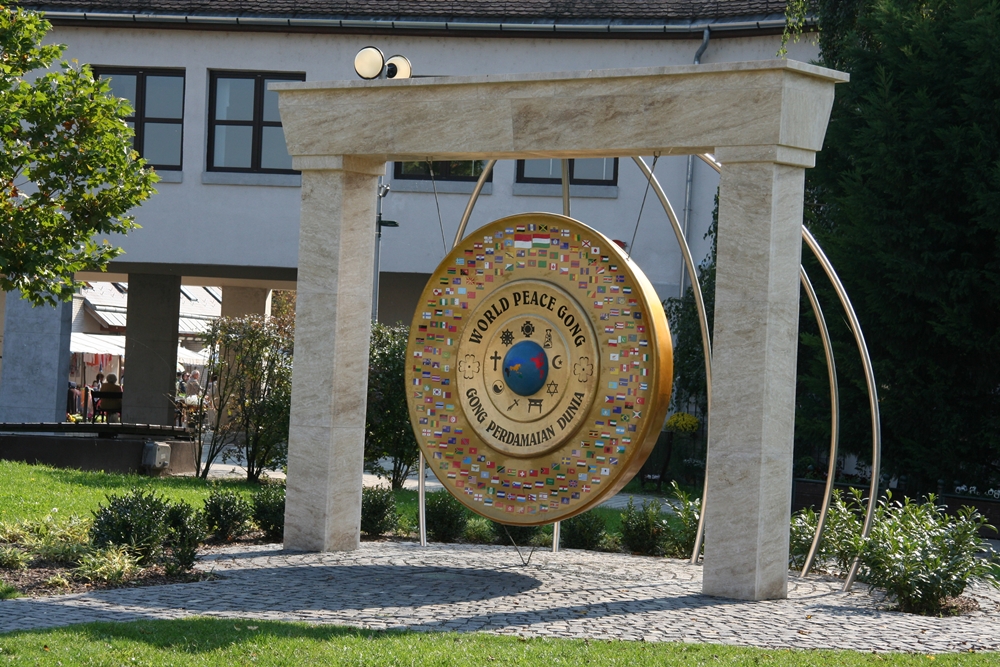 |
| The first European World Peace Gong |
| |














